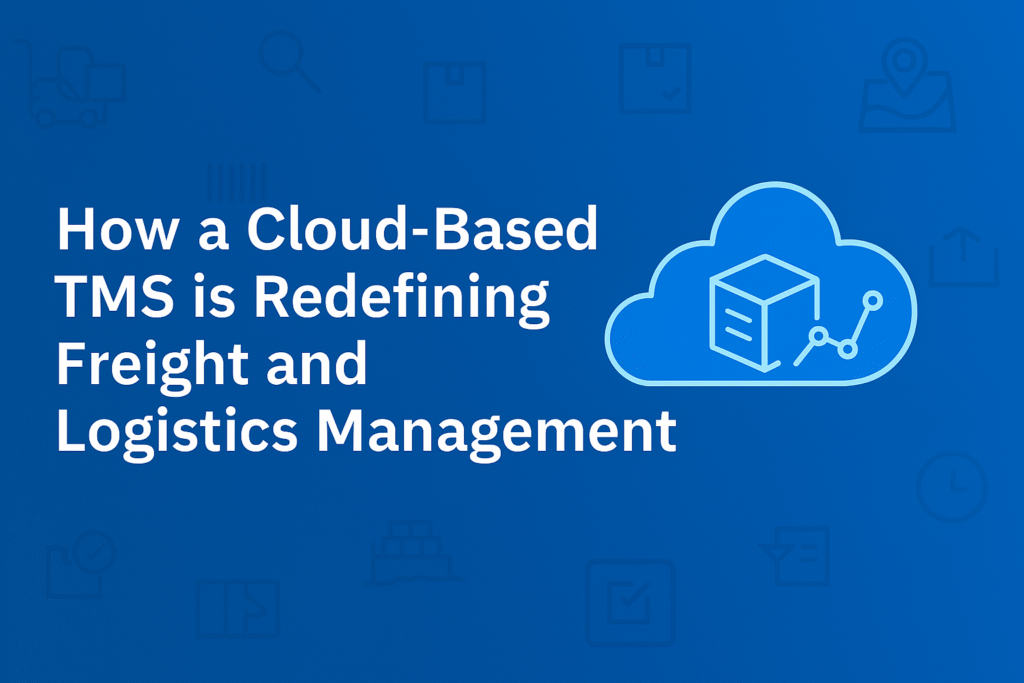
In the ever-changing world of freight and logistics, businesses are under constant pressure to move goods faster, at lower costs, and with greater visibility. Traditional transportation management systems (TMS) often struggle to keep up because they are rigid, expensive to maintain, and unable to scale easily. This is where cloud-based TMS solutions are transforming the industry.
By shifting to the cloud, logistics companies gain agility, cost-efficiency, and real-time collaboration capabilities that were once impossible. Let’s explore how cloud-based TMS is reshaping freight and logistics management for the modern era.
1. Real-Time Visibility Across the Supply Chain
One of the biggest challenges in logistics has always been the lack of visibility. Legacy systems provide siloed data, leaving managers blind to delays, disruptions, or inefficiencies.
A cloud-based TMS centralizes data and provides end-to-end visibility in real time. Fleet managers can track shipments, monitor carrier performance, and proactively address delays before they impact customers. This transparency not only improves decision-making but also builds trust with clients expecting timely deliveries.
2. Cost Reduction Through Smarter Optimization
Fuel, labor, and maintenance costs continue to climb. Businesses need tools that go beyond basic planning. Cloud-based TMS uses advanced analytics and AI-driven optimization to:
-
Plan more efficient routes
-
Reduce empty miles
-
Improve load consolidation
-
Balance carrier capacity effectively
The result? A significant cut in transportation expenses and improved resource utilization. Over time, this optimization boosts profitability while lowering the environmental footprint.
3. Seamless Scalability for Growing Businesses
Traditional TMS requires heavy upfront investment and ongoing maintenance, making it difficult for smaller businesses to adopt or scale. In contrast, cloud-based TMS is subscription-driven and pay-as-you-grow.
Whether a company manages 50 shipments or 50,000, cloud systems scale seamlessly without requiring major infrastructure changes. This flexibility makes it easier for businesses to expand into new markets or handle seasonal surges without worrying about system limitations.
4. Faster Deployment and Lower IT Burden
On-premise systems can take months to implement and require dedicated IT teams for updates. Cloud-based TMS is different. It can be deployed quickly, updates are automatic, and maintenance is handled by the provider.
This shift reduces IT overhead, ensures businesses are always on the latest version, and allows internal teams to focus on core logistics operations rather than troubleshooting software issues.
5. Improved Collaboration and Carrier Management
Modern supply chains depend on strong collaboration between shippers, carriers, and partners. Cloud platforms allow stakeholders to share information, invoices, documents, and updates instantly.
Instead of dealing with back-and-forth emails or spreadsheets, all parties work on a single shared platform. This improves efficiency, reduces errors, and strengthens relationships across the logistics network.
6. Data-Driven Decision Making
Cloud-based TMS comes equipped with dashboards and reporting tools that transform raw data into actionable insights. Logistics managers can analyze:
-
Carrier performance trends
-
Cost per shipment
-
On-time delivery rates
-
Customer satisfaction levels
These insights enable companies to continuously refine operations and respond quickly to market changes. Over time, the data-driven approach provides a competitive edge in a tight logistics market.
7. Future-Proofing Logistics Operations
The freight and logistics industry is evolving rapidly, with new challenges like driver shortages, rising fuel costs, and sustainability demands. Cloud-based TMS platforms are built to adapt to these changes.
With built-in integrations for AI, IoT, and predictive analytics, cloud TMS positions businesses to embrace future innovations without replacing their core system. This adaptability is critical for long-term success in a digital-first supply chain.
Final Thoughts
Cloud-based TMS is not just an upgrade it’s a fundamental shift in how freight and logistics are managed. From real-time visibility to cost savings, scalability, and better collaboration, it empowers businesses to deliver faster, smarter, and more sustainably.
For companies looking to stay competitive, adopting a cloud-based TMS is no longer a question of if—but when. Those who make the shift now are setting themselves up to thrive in a future where speed, transparency, and adaptability are non-negotiable.


